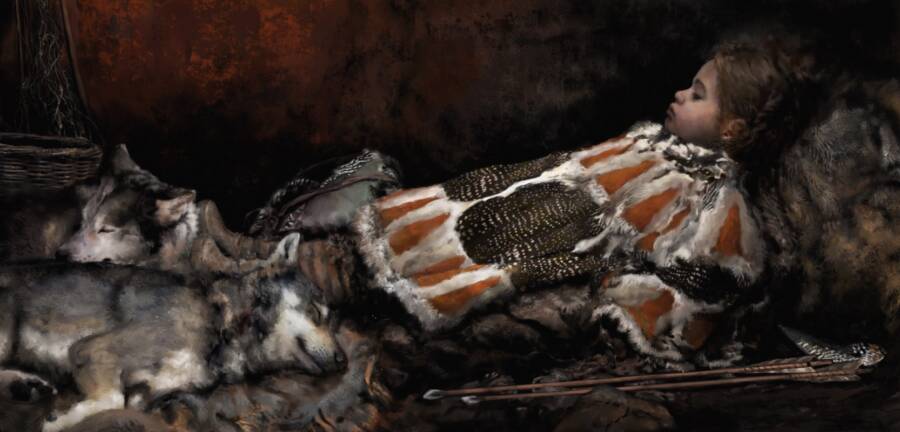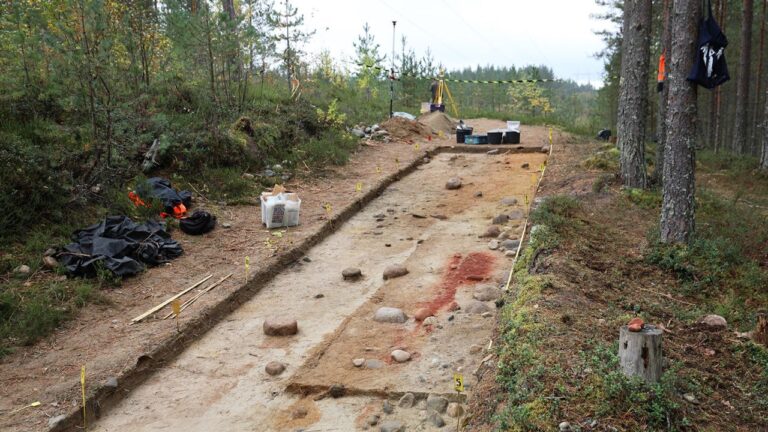Stone Age Child may have been buried with a wolf
Considering Finland’s highly acidic soil, archaeologists were surprised to find animal fur and feathers buried alongside a child from the Stone Age.
A Stone Age burial in Finland holds the remains of a child, as well as an assortment of grave goods, bird feathers, canine hairs and plant fibers, giving archaeologists insight into burial practices from that time period.
A couple of teeth and arrowheads were found in the grave.
First discovered in 1991 in Majoonsuo, an archaeological site near the town of Outokumpu in eastern Finland, the grave contains the teeth of a child, who, based on a dental analysis, died between the ages of 3 and 10.

Archaeologists from the Finnish Heritage Agency, a cultural and research institution in Helsinki, determined it was a grave site based on red ochre — an iron-rich soil commonly associated with burial sites and rock art — that had stained a gravel roadway. The agency’s excavation team examined the site in 2018 and determined that it was “at risk of destruction,” according to a statement.
Oldest Feather Fragments Found in Finland
Based on the trapezoidal shape of two arrowheads made of quartz, the archaeologists determined that the grave dates to the Mesolithic period, or Middle Stone Age, roughly 8,000 years ago.
After analyzing soil samples, the researchers discovered barbules from the feathers of waterfowl that could have been used to create a bed of down feathers for the child; they also found a single falcon feather fragment. This falcon feather may have been fletching that helped guide an arrow, or perhaps a decoration on a garment, the researchers said.
Wolf Hairs
At the base of the burial lay 24 fragments of mammalian hair. While many of the hairs were badly degraded, the researchers determined that three came from a canine, possibly a wolf or a dog that may have been laid at the feet of the child as part of the burial. It’s also possible that the canid hairs came from clothing, such as footwear crafted from dogskin or wolfskin, worn by the child, the teams noted.

“Dogs interred with the deceased have been found in, for example, Skateholm, a famous burial site in southern Sweden dating back some 7,000 years,” Kristiina Mannermaa, a researcher and associate professor in the Department of Cultures at the University of Helsinki, said in the statement. “The discovery in Majoonsuo is sensational, even though there is nothing but hairs left of the animal or animals — not even teeth. We don’t even know whether it’s a dog or a wolf.”
She added, “The method used demonstrates that traces of fur and feathers can be found even in graves several thousands of years old, including in Finland.”
Bright red ocher marked the spot of the grave, uncovered on a service road in a forest in Eastern Finland.
In addition, archaeologists unearthed plant fibers, possibly from willows or nettles, that might have been used to make clothing or fishing nets. Because the soil in this area of Finland is highly acidic, the archaeologists were surprised at how well some of the organic remains have lasted over the centuries.




